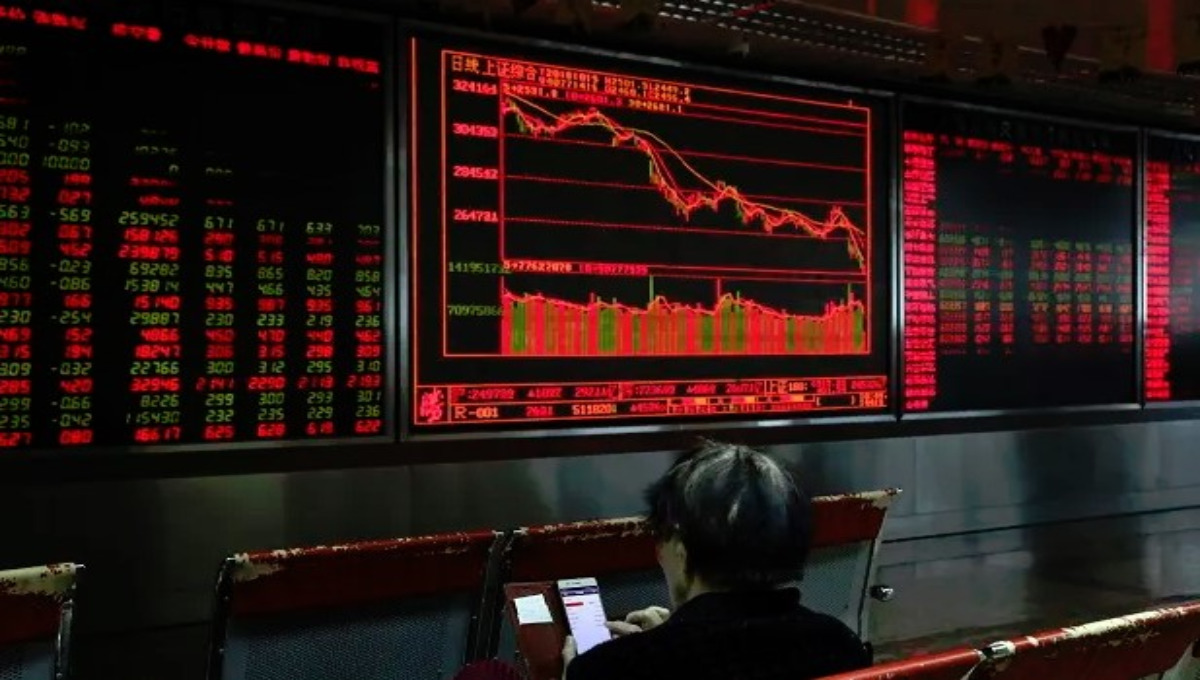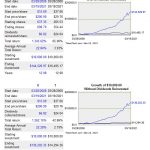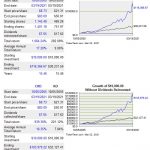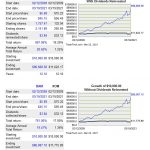Contents
Many investors ignore total return to their detriment. Instead, they focus heavily/exclusively on a stock's dividend yield. The dividend yield, however, is only one component of an investment's potential overall return. Rather than mistakenly focus on dividend yield, focus on total return to better manage your investments.
The goal of total return is to tell you the overall results generated during the time you hold an asset. The total return should include the fluctuation in the:
- value of the asset (eg. share value);
- earnings generated (eg. dividends);
- spin-offs from activity, etc. (eg. shares in Broadridge Financial Solutions (BR) and CDK Global (CDK) spun off from Automatic Data Processing (ADP)).
Potential Return Matters
Investors who rely heavily on the dividend yield metric in stock screeners to identify investment opportunities have asked me why several holdings in the FFJ Portfolio have a dividend yield below 2%; I also have several holdings in accounts with sub-2% dividend yields for which I do not disclose details.
In my opinion, heavy reliance on the dividend yield metric in stock screeners is likely to lead to the exclusion of wonderful investment opportunities.
I purposely exclude the dividend yield metric in the stock screeners I commonly use. My logic is that a company should retain a large percentage of its profits if this is the most optimal manner in which to increase shareholder value.
I provide the following comparisons to demonstrate my logic.
VISA versus AT&T
Visa (V) is my largest holding; shares are held in a retirement account for which I do not disclose details. The company went public on March 18, 2008, I initiated a position on March 28, 2008, I have periodically added to my position, and have reinvested the quarterly dividends.
Shares in AT&T (T) are held in another retirement account. I also have a small position in one of the Core accounts within the FFJ Portfolio. The quarterly dividends have also been reinvested and on occasion, I have acquired additional shares.
The following image shows the extent to which both stocks have performed using March 28, 2008 as the start date.
Source: Tickertech
The average cost of my VISA shares is relatively similar to the $15.69 reflected above. The average cost of my AT&T shares, however, is ~$26 so my AT&T investment return is slightly higher than that reflected in the image.
What I want you to take away from this comparison is the extent to which a VISA investment has appreciated in ~13 years relative to an AT&T investment. An investor who invested in AT&T and not VISA because VISA had a low dividend yield and no history of annual dividend increases, would have fared poorly. Keep in mind this image compares the return of both stocks based on a $10,000 initial investment; my initial investments were far greater than this amount.
Church & Dwight versus The Coca-Cola Company
Church & Dwight (CHD) is my second-largest holding and the dividend yield typically hovers around 1%.
This company crossed my path through work in late 2005. I was familiar with the Arm & Hammer brand but knew nothing about the company. Following my analysis, I concluded this was a company in which I should take a position. I acquired a sizable position in my retirement account in early October 2005 and have periodically acquired additional shares over the years. My average cost is now ~$15.80.
I compare the overall investment return of CHD with that of The Coca-Cola Company (KO) based on the same initial investment date in October 2005 even though I only initiated a KO position on January 9, 2014.
Source: Tickertech
Brookfield Asset Management versus Exxon Mobil
I initiated a Brookfield Asset Management (BAM) position on February 12, 2009 and have subsequently reinvested the quarterly dividends. I have also acquired additional shares on several occasions in different accounts.
Coincidentally, I initiated a position in Exxon Mobil (XOM) in mid-March 2009 and have periodically acquired additional shares in different accounts. The performance of both stocks uses February 12, 2009 as the start date.
Source: Tickertech
Verizon versus Berkshire Hathaway (Class B)
This comparison is even more extreme. Verizon (VZ) typically has a +4% dividend yield and Berkshire Hathaway (BRK-b) distributes no dividend.
I initiated a VZ position on August 15, 2016 and have reinvested the quarterly dividends. I have acquired BRK-b shares on multiple occasions in multiple accounts. For purposes comparison purposes, I compare the performance of both stocks using an August 15, 2016 start date.
Source: Tickertech
Final Thoughts
Valuation is always important when making any investment decision. It is, however, critically important in the case of an equity investment with a very low or non-existent dividend yield. Many investors completely disregarded the valuation of Intel (INTC) and Cisco (CSCO) at the height of the dot.com bubble in late 1999 - early 2000. Those who invested during this timeframe and still retain their shares have dismal investment returns.
Source: Tickertech
The investment return is likely to be abysmal when you grossly overpay for a stock. This is especially pertinent when the underlying security's dividend yield is extremely low. This is why in my recent NIKE guest post I indicated I would not be adding to my existing NIKE (NKE) position at the current valuation.
A very valid argument can be made that I should liquidate the inferior companies referenced in this post and redeploy funds in superior companies. I may well start to do so in the coming months. My wife and I need to start 'melting down' our Registered Retirement Savings Plan (RRSP) accounts. In a little over a decade, we will be mandated to convert our RRSPs to Registered Retirement Income Funds (RRIFs); the mandatory conversion age is 71. If we fail to make RRSP withdrawals over the next several years, we will be in the predicament that mandatory minimum annual RRIF withdrawals will be taxed at the highest marginal tax rate.
Many investors are fixated on investing in companies with attractive dividend yields. If this fits your modus operandi, I hope this post helps you reconsider your strategy. Please focus on total return to better manage your investments.
I wish you much success on your journey to financial freedom.
Thanks for reading!
Note: Please send any feedback, corrections, or questions to [email protected].
Disclaimer: I do not know your circumstances and am not providing individualized advice or recommendations. You should not make any investment decision without conducting your research and due diligence.
Disclosure: I am long V, T, CHD, KO, BAM-a, XOM, VZ, BRK-b, CSCO, and NKE.
I wrote this article myself and it expresses my own opinions. I do not receive compensation for it and have no business relationship with the company mentioned in this article.







